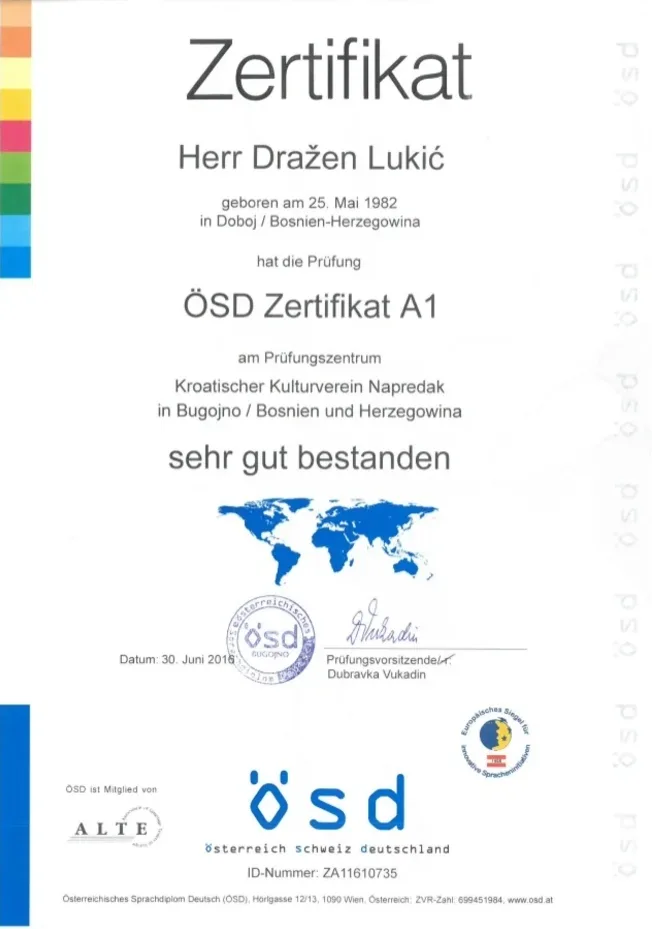What Is The Reason? Ösd B2 Is Fast Becoming The Most Popular Trend For 2024?

Understanding the ÖSD B2 Certification: A Comprehensive Guide for German Learners
In the landscape of language credentials, the ÖSD B2 certification stands apart as a substantial turning point for students of the German language. Attaining efficiency at this level opens many avenues, both academically and expertly, while likewise enriching cultural understanding and personal advancement. This short article aims to supply a useful overview of the ÖSD B2 certification, detailing its significance, structure, preparation techniques, and regularly asked concerns.

What is the ÖSD B2 Certification?
The ÖSD (Österreichisches Sprachdiplom Deutsch) B2 certification is a main language qualification that assesses intermediate efficiency in the German language. It is especially recognized in Austria, Germany, and Switzerland, making it a valuable possession for those preparing to study or work in these nations.
At the B2 level, learners are expected to:
Understand the primary ideas of complicated texts on both concrete and abstract topics.
Communicate with fluency and spontaneity with native speakers.
Produce clear, in-depth texts on a large range of topics related to their interests.
Why is the ÖSD B2 Certification Important?
Academic Opportunities: Many universities in German-speaking countries require a minimum of B2-level efficiency for admissions, especially for courses taught in German.
Professional Advantages: Employers frequently seek candidates with acknowledged language certifications, and B2 efficiency demonstrates the capability to interact efficiently in professional settings.
Cultural Integration: Achieving this level can deepen one's understanding of German culture, society, and subtleties of everyday language.
Structure of the ÖSD B2 Exam
The ÖSD B2 evaluation comprises four main components: Listening, Reading, Writing, and Speaking. Each area examines different proficiencies within the language ability set.
1. Listening ÖSD-Zertifikat B1
In this section, test-takers listen to different audio clips such as discussions, report, and conversations. They are needed to answer concerns that measure their understanding of content, tone, and implications.
2. Reading Comprehension
This part includes different written products like short articles, advertisements, and emails. Candidates need to demonstrate their ability to comprehend the context and essential concepts, in addition to interpret various kinds of texts.
3. Writing
Candidates are asked to write a text based on a particular topic, often requiring structured arguments and meaningful reasoning. This might consist of writing essays, reports, or official letters.
4. Speaking
The speaking examination typically includes two parts: a monologue and a discussion with an inspector. Test-takers must communicate successfully, express opinions, and react to questions clearly.
Scoring System
Each part is scored separately, and to pass, candidates normally need to attain a typical rating throughout all sections. The grading criteria focus on language efficiency, coherence, fluency, and the capability to engage in discussion.
Preparation Strategies for ÖSD B2
Preparing for the ÖSD B2 exam can be a demanding yet gratifying undertaking. Here are some reliable strategies that can boost your preparation:
1. Familiarize Yourself with the Exam Format
Review previous exam papers to understand the kinds of concerns and tasks included.
Record yourself throughout practice speaking sessions to improve fluency and articulation.
2. Develop Your Vocabulary
Produce vocabulary lists based upon typical styles for the B2 level, such as Work, Environment, and Health.
Use flashcards and language apps to reinforce learning.
3. Practice Listening Skills
Listen to German podcasts, news stations, and audiobooks that include a variety of topics and accents.
Engage in routine discussion practice with native speakers, either in person or online.
4. Take Mock Exams
Imitate exam conditions by taking practice tests within the assigned time frame.
Analyze your efficiency to determine locations for enhancement.
5. Join Study Groups
Team up with fellow students to practice speaking and exchange resources.
Engage in discussions that challenge your understanding of intricate topics.
Typical Questions about ÖSD B2
FAQ
Q1: How long is the ÖSD B2 accreditation legitimate?
A1: The ÖSD B2 certificate does not end, but it is advisable to keep your language abilities upgraded through consistent practice and use.
Q2: What resources are recommended for getting ready for the ÖSD B2 exam?
A2: Books specifically designed for B2 preparation, online courses, language exchange platforms, and main ÖSD practice products are suggested for effective study.
Q3: Where can I take the ÖSD B2 exam?
A3: The ÖSD B2 exam can be taken at numerous language schools, universities, and ÖSD assessment centers worldwide. It's a good idea to inspect for arranged dates in your region.
Q4: What if I fail the exam?
A4: Candidates can retake the ÖSD B2 exam as lot of times as required to achieve the desired outcome. Nevertheless, it's typically helpful to take some time to improve language skills before reattempting.
Conclusion
The ÖSD B2 certification represents a vital action in the journey of mastering the German language. By comprehending the structure of the exam, using reliable preparation techniques, and utilizing available resources, students can improve their efficiency and accomplish their language objectives. Eventually, the benefits of achieving the B2 certificate extend beyond academia and work, improving the cultural and social experiences of those who strive to learn German. Starting this journey is not almost passing an exam; it's about accepting a language that opens doors to brand-new chances and experiences.
